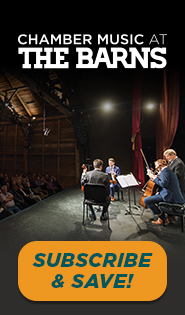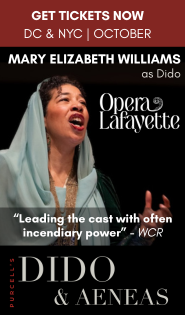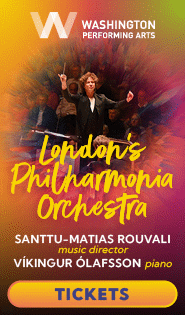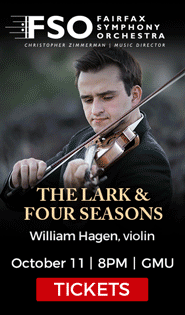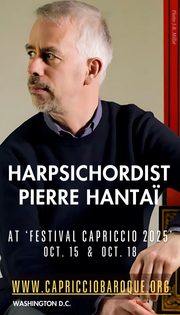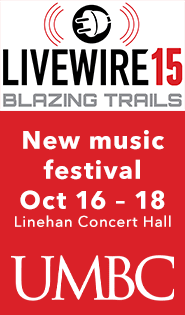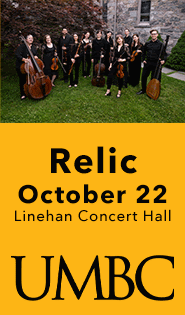Graf and Capuçon make welcome NSO returns for a musical tour of Vienna
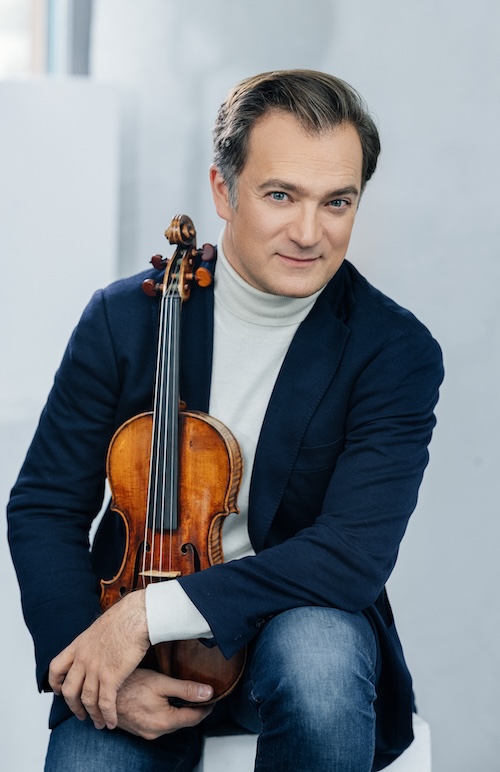
Renaud Capuçon performed Alban Berg’s Violin Concerto with Hans Graf and the National Symphony Orchestra Thursday night at the Kennedy Center. Photo: Universal Music
Hans Graf used to guest conduct both the National Symphony Orchestra and the Baltimore Symphony Orchestra more regularly when he was music director of the Houston Symphony. The Austrian-born maestro returned to the podium of the Kennedy Center Concert Hall Thursday night for the first time since 2012. He brought a delectable program showcasing three musical facets of the city of Vienna, ranging from sweet to savory.
The satisfying heart of the evening, Alban Berg’s Violin Concerto, came with another welcome return, the extraordinary French violinist Renaud Capuçon. In two compact movements, the piece begins in the twelve-tone style, but the composer’s choice of tone row, a series of triads ending in a whole-tone scale, flirts with tonality. By the end, Berg turns that whole-tone scale into an extensive quotation of Bach’s setting of the chorale Es ist genug, a memorial to Manon Gropius, Alma Mahler’s daughter, who died of polio at age 18.
From the distinctive opening of the first movement, a sequence of perfect fifths played on the violin’s open strings, Capuçon brought poetic beauty to this often astringent score. Graf’s attention to balances put his soloist on strong footing as far as being able to stand up his bravura sound against the large orchestra. In the Allegretto section, Capuçon’s ferocious double-stops echoed the twinned clarinet lines, leading many delicate woodwind sounds.
After the end of the first movement, bristling with quiet tension, the Allegro (Cadenza) section featured alto saxophone lines hiding among the woodwind section. Capuçon delivered some of his most magisterial playing in this part of the concerto: triple-stop chords played with locked-in assurance, and flawless left-hand pizzicati that managed not to interrupt the melodic flow of the violinist’s principal melody. The viola section, led by principal Daniel Foster, unwound the last threads of accompaniment to this extended cadenza.
After a final surge of orchestral sound, like a howl in the darkness, Capuçon rose seamlessly out of the texture on the tune of Es ist genug, a reflection on the end of life. The three clarinets and bass clarinet took up the melody, like a ghostly recollection of Bach’s music. Near the end, the solo violin’s sound was slowly engulfed as the violin sections merged with him, giving the sense of the soul lifted toward the heavens. As the coda of the movement slowed, Capuçon rose to a shimmering high G, sustained limpidly, with the violin section repeating the soloist’s opening motif in perfect fifths.
Capuçon offered a brief but potent encore, the Daphne-Etude by Richard Strauss, who also lived and worked for a time in Vienna. This delicate solo bonbon drawn from the composer’s opera, recorded on Capuçon’s Strauss discs released earlier this year, seemed to begin where the Berg had left off, providing a sort of afterglow.
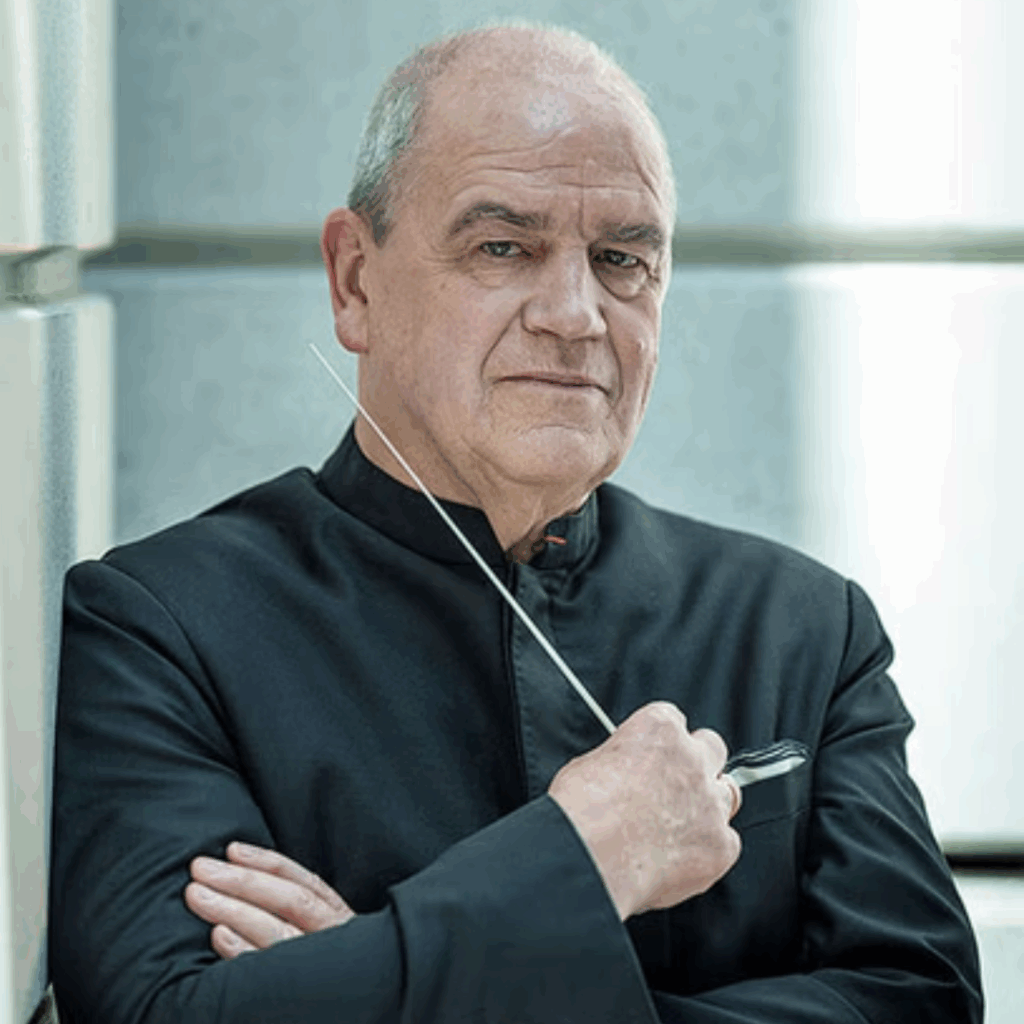
Hans Graf conducted the NSO in music of Schubert, Berg and Johann Strauss Jr. Thursday night.
Schubert’s Eighth Symphony (“Unfinished”), also in two movements like the Berg concerto, offered a tonal counterweight, equally tragic in many ways. While Graf had provided crucial support to Capuçon in the Berg piece, here the patience and experience of the 76-year-old conductor came to the fore. He paced both movements with quiet grace, drawing out exquisite moments like the charming second theme of the first movement, with the cello section led ably by recently appointed assistant principal Raymond Tsai.
When a cell phone went off just as Graf was about to begin the second movement, he wisely lowered his hands until the disturbance was past. A slight turn of the head was enough to express his disappointment. Again principal clarinetist Lin Ma rendered this movement’s gentle second theme with consummate expressive shaping. The two horn players displayed technical control of their crucial parts, while Aaron Goldman and Nicholas Stovall traded flute and oboe lines, rounding out the best rendition of this beloved symphony heard in many years.
Bookending the concert were two waltzes composed by Johann Strauss II, providing both an amuse-bouche and the pastry dessert. Graf, who hails from Linz, put just the right Austrian touch of sentimental rubato in Rosen aus dem Süden, with themes drawn from Strauss’s operetta Das Spitzentuch der Königin. The more ceremonial Kaiser-Walzer, part easy-going march and part waltz, featured Tsai in some extensive cello solos that crowned an enjoyable tour of Vienna.
__________
Changes at the Kennedy Center continue. This week the administration chopped down over half of the trees planted on the ground-level terrace, overlooking the Potomac River, with no official announcement or explanation. Just before the concert began, the NSO again played the Star-Spangled Banner, a custom usually observed only at the gala and the first subscription concert. KC sources say that the NSO will play the American national anthem before every concert this season. The musicians were so familiar with the piece that Graf did not even need to conduct.
The program will be repeated 11:30 a.m. Friday and 8 p.m. Saturday. kennedy-center.org
